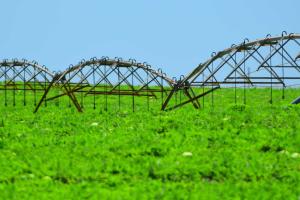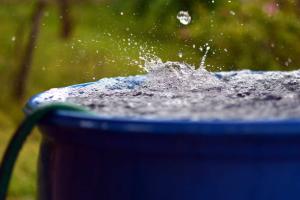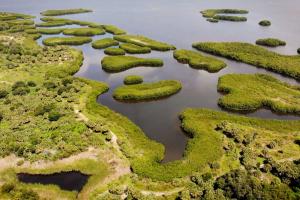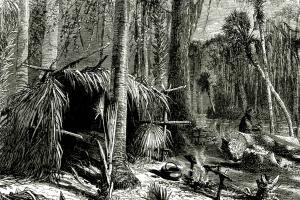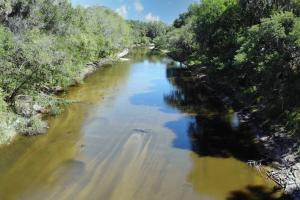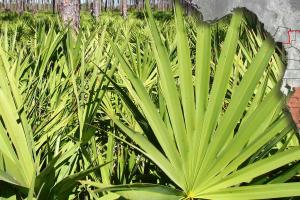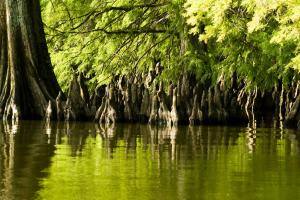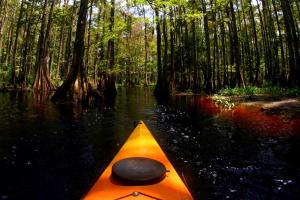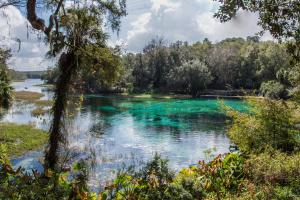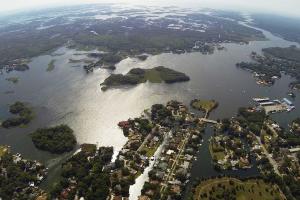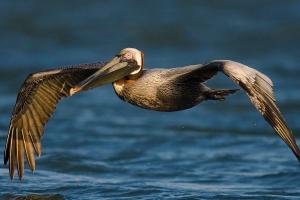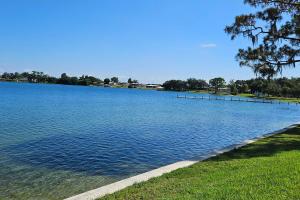Search Content
Displaying results 1861 - 1880 of 4920
Updated February 2025Our mission is to protect water resources, minimize flood risks, and ensure the public’s water needs are met.The Strategic Plan provides a road map for how the District will meet the water resources challenges of west-central Florida by identifying what needs to be accomplished, how the job will be done, and how success will be measured. In addition to identifying the District’s programs, the Plan targets specific priorities in each of the our four…
Assisting the agricultural community by improving irrigation efficiency and conserving water. The Mobile Irrigation Lab program is an ongoing joint effort between the District, the U.S. Department of Agriculture–Natural Resources Conservation Service (USDA–NRCS) and the agricultural community. The program began in 1987 to assist the District in meeting its statutory responsibilities and to assist growers with water conservation.The Mobile Irrigation Lab is a free…
Fertilize Smart, Protect Our Waterways. #FertilizeSmartUnlock expert tips on fertilizing your lawn the right way—at the right time, with the right fertilizer—to keep your grass green and our water clean!Download Your Free Guide!Sign up for the Water 101 for Homeowners newsletter and get access to your free fertilizing guide instantly. Get Your Free Guide
function redirectToPDF() {
setTimeout(function() {
window.location.href…
The Chassahowitzka Springs Restoration Project improved water quality and the bottom habitat for plants and animals. Project OverviewThe Southwest Florida Water Management District restored portions of Chassahowitzka Springs by removing accumulated sediments, which improved the water quality and the bottom habitat for plants and animals.BackgroundSand and organic materials have been transported by flows from residential canals and stormwater runoff to the springs and…
A How-to for Installing a Rain BarrelBenefits
- Supplement irrigation and save money over time
- Reduce stormwater runoff which can lead to reduced levels of pesticides and fertilizers in our water
- Help reduce the amount of water that may settle around the foundation of your home
- Connect to a soaker hose (with the pressure-reducing washer removed)
- Fill a watering can and hand-water plants, flower beds…
A watershed is an area of land that water flows across as it moves toward a common body of water, such as a stream, river, lake or coast. The Alafia River watershed is approximately 270,000 acres, or 418 square miles. Although a portion of the watershed lies in Polk County, most of it lies in Hillsborough County. In fact, it’s the largest watershed in Hillsborough County.
.embed-container {position: relative; padding-bottom: 70%; height: 0; width: 150%;margin-left:-…
About the Watershed Management ProgramThe District takes a watershed approach to managing water and water-related resources within its boundaries. By doing so, all the characteristics of each watershed can be evaluated to reflect the real, interconnected nature of Florida’s water resources. This increases the District’s ability to clearly identify, prioritize and address issues related to the area’s water resources. The Watershed Management Program provides a method to…
6000 B.C.While archaeologists report evidence of human activity in the Green Swamp dating back to as early as 6000 B.C., permanent ancient human settlements have never been discovered. However, it has always been home to an abundance of plant and animal life, making it attractive for human use. The land was used by ancient peoples for hunting and food gathering, as well as collecting material to make weapons.1513-1542 A.D. Hernando de Soto explored the area …
The Peace River gets its fresh water from rainfall. Annual rainfall averages approximately 53 inches, with more than half occurring between June and September. Most of the rainwater reenters the atmosphere through evaporation and plant transpiration. The rest recharges the aquifer or runs off into the Peace River and its tributary streams. The river is primarily a blackwater river. This type of river drains pine flatwoods and cypress swamps and has dark, stained waters…
This project will investigate the recharging of excess surface water, treated to primary drinking water standards, into the Upper Floridan aquifer more than 1,000 feet below the land’s surface. The recharged water has the potential to help improve groundwater levels and reduce the rate of saltwater intrusion from the Gulf of America in the SWUCA’s Most Impacted Area.SWUCA Recovery and Natural System ImprovementIn 2017, the District conducted a feasibility study at…
An Environmental Resource Permit (ERP) is required before beginning any construction activity that would affect wetlands, alter surface water flows, or contribute to water pollution.Environmental Resource PermitsAs authorized by Part IV of…
The purpose of the Environmental Advisory Committee (EAC) is to provide input into District programs and activities.This includes regulatory programs, rule revisions, water conservation activities, water resource planning, water resource and supply development projects, research and other water resource management projects that relate to the environment. Subject matter considered by the EAC shall relate to the statutory duties and responsibilities of the District.EAC members…
Canoeing »
Explore the deepest wildlands of a Florida blackwater cypress swamp, or float down the crystal clear waters of a pristine spring-fed stream.
District lands preserve hundreds of miles of pristine shoreline along many of the beautiful rivers and lakes in the region. Whether it is a great blue heron stalking its prey, an alligator sunning on a log or a deer getting a drink from the cool, clear waters of a spring-fed river, there are endless opportunities to view wildlife in…
The Weeki Wachee Springs Restoration Project improved water quality and enhanced the overall natural system.
Project Overview
The Southwest Florida Water Management District restored portions of Weeki Wachee Springs in 2009 to improve water quality in the headspring and the upper river, as well as enhance the overall natural system.
Background
The Weeki Wachee Restoration Project was the second project aimed at cleaning up the springs.
The first project…
The Rainbow River in Marion County begins at Rainbow Springs in the town of Dunnellon and makes its way 5.7 miles until it merges with the Withlacoochee River. The Withlacoochee River ultimately discharges into the Gulf of America on the border of Citrus and Levy counties.Rainbow Springs has the fourth largest flow of all Florida’s springs and provides fresh water to the Rainbow and Withlacoochee rivers. The…
This project improved water quality in the Weeki Wachee River.Project OverviewThe Southwest Florida Water Management District and Hernando County made enhancements to stormwater management at Rogers Park. The park is owned by the County and located on the Weeki Wachee River. These improvements benefit the river by reducing the amount of sediments and nutrients entering the river. Project DetailsThis project uses Low Impact Development (LID) techniques to…
Moving southwest you will find Crystal River, which is in Citrus County and runs from the town of Crystal River west for seven miles towards the Gulf of America. Crystal River’s headwaters is an area known as Kings Bay, which has more than 70 springs. Crystal River/Kings Bay is the second largest springs group in Florida, the first being Wakulla Springs in northern Florida near Tallahassee.Many of the river's springs are 20 to 30 feet deep, and the water discharging from…
Residents and tourists have flocked to the Sarasota Bay region for years due to its remarkable natural beauty. Sarasota Bay is a subtropical estuary with a surface area of approximately 52 square miles. An estuary is a semi-enclosed body of water where fresh water mixes with salt water.The area features outstanding fishing, boating and wildlife viewing. It’s home to a wide variety of marine life, including manatees, mullet, dolphins, spotted sea trout, snook, red drum (…
The District is scheduled to adopt new minimum levels for Lake Angelo and Lake Denton, located in northern Highlands County.MFL OverviewThe District is directed by the Florida Legislature to establish minimum flows and levels (MFL) for water bodies within its boundaries. Minimum levels are…

